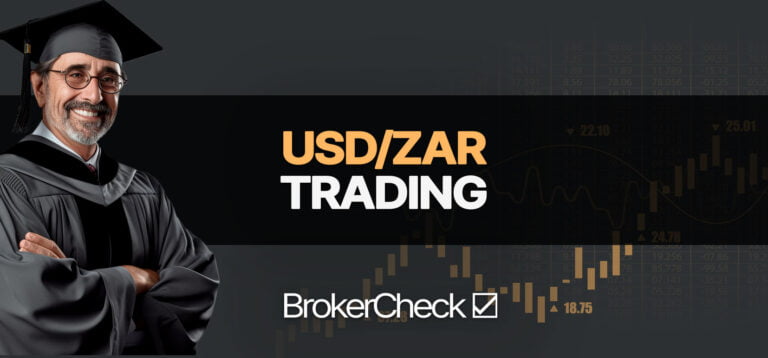1. What is the Most Accurate Forex Strategy?
The notion of a singular “most accurate” Forex strategy is misleading due to the highly subjective nature of trading strategies and the varying conditions of the Forex market. However, price action trading stands out for its reliance on real-time price movements and the absence of lagging indicators. Traders who excel in price action trading read candlestick patterns and chart formations to make informed decisions, often complementing their analysis with support and resistance levels, trend lines, and volume.
Another strategy that garners attention for its precision is the carry trade, which benefits from the interest rate differentials between currencies. This strategy works best in a stable or predictable market environment, where traders go long on currencies with higher interest rates and short on those with lower rates, profiting from the spread.
For systematic traders, quantitative strategies that use complex mathematical models to identify trading opportunities are highly regarded for their accuracy. These strategies often involve backtesting on historical data and are implemented using automated trading systems. They can adapt to various market conditions and typically require a robust risk management framework to mitigate potential drawdowns.
Scalping is also favored among traders looking for accuracy, focusing on small price changes and quick trades. Scalpers benefit from a disciplined approach to take advantage of minor price discrepancies over a very short timeframe, often utilizing high leverage and tight stop-loss orders.
In essence, the accuracy of a Forex strategy is contingent upon its alignment with market conditions, the trader’s skill level, and risk tolerance. Diverse strategies may yield precision under different scenarios, and continuous learning, adaptation, and risk management are key to maintaining accuracy.
2. How to Set Up the Most Accurate Forex Strategy?
Developing an accurate Forex strategy entails a meticulous blend of technical and fundamental analysis to pinpoint high-probability trade setups. The first step involves identifying key levels of support and resistance, which act as barriers for price movement. Traders should look for confluences—multiple technical factors aligning at a particular price level—which can significantly increase the likelihood of a successful trade.
Technical indicators are instrumental in refining entry and exit points, enhancing the precision of a strategy. Popular choices such as moving averages (for trend direction), RSI (Relative Strength Index for momentum), and MACD (Moving Average Convergence Divergence for trend reversals) can be fine-tuned to the trader’s specific needs. It’s crucial to use these indicators in the context of the prevailing market conditions, rather than relying on them exclusively.
Incorporating fundamental analysis provides an additional layer of validation to the strategy. Monitoring economic indicators like GDP, inflation rates, and employment statistics, as well as geopolitical events and central bank decisions, can give traders insight into currency strength or weakness. This analysis should be aligned with the technical setup to ensure both macroeconomic and chart-based factors corroborate the trade thesis.
Risk management is the cornerstone of any Forex strategy, with meticulous attention to stop loss and take profit levels. These should be set in accordance with the trader’s risk tolerance and the volatility of the currency pair being traded. Proper position sizing, based on a percentage of the trading account, helps manage risk exposure and protects the trader from significant losses.
| Component | Description |
|---|---|
| Support & Resistance | Identify key price levels where the market has historically shown a reversal or consolidation. |
| Technical Indicators | Use tools like RSI, MACD, and moving averages to signal potential entry and exit points. |
| Fundamental Analysis | Align trade setups with economic indicators and market sentiment. |
| Risk Management | Implement stop loss, take profit, and position sizing to protect the trading capital. |
By diligently applying these elements, traders can enhance the accuracy of their Forex strategies, improving their chances of success in the volatile currency markets.
2.1. Identifying High Probability Trade Setups
Identifying high-probability trade setups is a critical aspect of successful Forex trading, demanding a deep understanding of market dynamics and the ability to decipher key signals from charts. Traders often employ price action analysis to discern patterns that are more likely to forecast future price movements. This includes recognizing chart formations such as flags, triangles, and head and shoulder patterns, indicating continuation or reversal.
Candlestick patterns, such as the engulfing or pin bar formations, provide insights into market sentiment and potential price direction changes. These patterns, when combined with significant levels of support and resistance, can form the basis of high probability trade setups.
Volume is another crucial factor to consider—it can validate the strength behind a price movement. For instance, a breakout accompanied by high volume is more likely to sustain its direction, making it a more reliable trade opportunity.
Market confluence is an underpinning concept where multiple technical elements align, suggesting a stronger case for a particular trade. This might involve the intersection of a Fibonacci retracement level with a long-term trend line or a moving average crossover in conjunction with a key psychological price level.
Correlation between currency pairs can also be exploited. Some currency pairs move in tandem due to economic or geopolitical links, while others have an inverse relationship. Recognizing these correlations can enable traders to hedge their positions or identify unique trade setups.
Traders should always assess the risk-to-reward ratio of any potential setup. High probability trades are ones where the anticipated profit significantly outweighs the risk. A favorable ratio is typically above 1:2, ensuring that even if only half of the trades are successful, the strategy remains profitable.
In practice, the following table summarizes the critical aspects to consider when identifying high probability trade setups:
| Key Aspect | Purpose | Example |
|---|---|---|
| Price Action Patterns | To forecast future price movements | Head and Shoulders, Flags |
| Candlestick Patterns | To understand market sentiment | Engulfing, Doji, Pin Bars |
| Volume Analysis | To confirm the strength of price moves | High volume breakouts |
| Market Confluence | To find stronger trade cases | Fibonacci levels with trend lines |
| Currency Correlations | To hedge or find unique setups | Positive/Negative correlations |
| Risk-to-Reward Ratio | To ensure profitability | Ratios above 1:2 |
By meticulously analyzing these aspects, traders can filter out less favorable trades, focusing their efforts on setups that have the highest probability of yielding a positive outcome.
2.2. Utilizing Technical Indicators for Precision
Technical indicators serve as navigational beacons in the turbulent Forex market, providing traders with quantifiable data that can be used to inform trade decisions. Precision in trading is often a result of how effectively a trader can utilize these tools to confirm trends, momentum, and potential reversals.
The Relative Strength Index (RSI), for instance, gauges the momentum of currency price movements. An RSI reading above 70 typically signals that a currency may be overbought, while a reading below 30 may indicate an oversold condition. Traders use these thresholds to time their entries and exits for maximum profit potential.
Moving averages are pivotal in identifying the direction of the trend. A common strategy involves observing the crossover of a short-term moving average above a longer-term one, signaling a possible bullish trend, and vice versa for a bearish trend. The 50-day and 200-day moving averages are widely monitored benchmarks.
The Moving Average Convergence Divergence (MACD) is another critical indicator, providing insights into the strength of the market’s momentum. It consists of two moving averages that converge and diverge; traders look for crossover points as signals to buy or sell.
Bollinger Bands are used to measure market volatility and identify overbought or oversold conditions. When prices move closer to the upper band, the market may be overbought, and when they move closer to the lower band, it may be oversold.
Applying these technical indicators requires careful calibration to match the trader’s specific strategy and market conditions. It’s not merely about using the indicators but understanding their signals in context.
Here’s a succinct overview of the key technical indicators and their primary uses:
| Technical Indicator | Primary Use | Signal Example |
|---|---|---|
| RSI (Relative Strength Index) | Momentum | Above 70 (overbought), Below 30 (oversold) |
| Moving Averages | Trend Direction | Short-term crossing above long-term (bullish) |
| MACD (Moving Average Convergence Divergence) | Momentum and Trend Reversals | Line crossover (buy/sell signal) |
| Bollinger Bands | Market Volatility | Price nearing upper/lower band (overbought/oversold) |
Incorporating these indicators into a trading strategy can lead to more informed and precise trading decisions. Traders must test and adapt these tools to their trading style, ensuring they provide clear and actionable signals that align with their risk tolerance and market outlook.
2.3. Integrating Fundamental Analysis
Fundamental analysis is a cornerstone of a comprehensive trading strategy, providing traders with a macroeconomic perspective that complements the precision of technical analysis. It involves the scrutiny of economic indicators, central bank policies, and political events to gauge the strength or weakness of a currency.
Key economic indicators that influence currency valuation include, but are not limited to:
- Gross Domestic Product (GDP): A measure of a nation’s economic health.
- Interest Rate Decisions: Central bank’s tool for monetary policy, affecting currency demand.
- Inflation Rates: High inflation may lead to higher interest rates, influencing currency strength.
- Employment Data: Strong employment can signal a robust economy and impact currency trends.
Traders should also monitor geopolitical developments and economic reports, as these can cause significant market volatility and opportunities for strategic entries or exits. The release of economic data often leads to increased market activity, which traders can capitalize on if they have anticipated the outcome correctly.
Integrating fundamental analysis into Forex trading is not just about understanding the current economic landscape but also about forecasting future trends. Economic calendars are a critical tool, providing a schedule of when key reports and announcements are due to be released, allowing traders to prepare for potential market movements.
The table below encapsulates the essence of fundamental analysis integration:
| Economic Indicator | Potential Impact on Currency |
|---|---|
| GDP Growth Rate | Positive growth may strengthen a currency. |
| Interest Rate Changes | Higher rates can attract foreign investment, boosting currency value. |
| Inflation Data | Rising inflation may lead to currency depreciation unless countered by higher interest rates. |
| Employment Figures | Strong job growth may lead to higher consumer spending and economic expansion, bolstering currency strength. |
By closely examining these indicators, traders can make more informed decisions, aligning their technical analysis with the broader economic picture, thus enhancing the efficacy of their trading strategy. Fundamental analysis is not a standalone tool; it should be used in conjunction with technical analysis and risk management techniques to construct a robust and accurate Forex trading strategy.
3. How to Use the Most Accurate Forex Strategy?
When executing the most accurate Forex strategy, precise entry points are critical. Traders must time their market entry to optimize profit potential while minimizing risk. Candlestick patterns, trend lines, and technical indicators like the RSI and MACD provide signals for when to initiate a trade. A bullish engulfing pattern at a support level, for instance, may be a strong buy signal, whereas a bearish divergence on the RSI could indicate an impending price drop.
Stop loss and take profit orders are non-negotiable components for managing risk. The stop loss should be placed at a level that represents an invalidation of the trade’s premise, a point where the market has moved enough against the position to suggest the initial analysis was incorrect. Conversely, the take profit level is set where the market is expected to encounter significant resistance or support that could stall or reverse the price movement.
Position sizing is about controlling market exposure. It’s about determining the amount of capital to risk on any single trade. A common approach is to risk a small percentage of the account balance, often between 1% to 2%, ensuring that even a series of losses won’t significantly deplete trading capital.
| Trade Aspect | Description | Example |
|---|---|---|
| Entry Points | Optimal timing for market entry | Bullish candlestick pattern at support level |
| Stop Loss | Risk management to limit losses | Set below a key support level for a long position |
| Take Profit | Risk management to secure profits | Set before a major resistance level for a long position |
| Position Sizing | Controlling the amount invested per trade | Risking 1% of account balance on a single trade |
By adhering to these principles, traders can use the most accurate Forex strategy effectively, balancing the potential for profit with the imperative of risk management. Each trade becomes a calculated decision, reflecting both the opportunities presented by the market and the trader’s unique risk profile.
3.1. Entry Points: Timing Your Trades
In the sphere of trading, entry points are the strategic moments when a trader decides to enter the market. These moments are pivotal for the execution of a well-crafted Forex strategy. Traders utilize technical analysis to identify these precise entry points, often relying on a combination of price patterns, indicators, and market conditions.
Support and resistance levels are crucial for timing entries. A break of resistance or bounce off support can signal a new trend or a trend continuation, presenting an opportune moment for entry. For additional confirmation, traders may wait for a retest of these levels, entering the trade as the retest confirms the level’s strength.
Candlestick patterns and price action offer visual cues for entry points. For example, a bullish engulfing pattern at a key support level may suggest a buying opportunity. In contrast, a bearish pattern at resistance might indicate a selling entry point.
Technical indicators provide quantitative measures to support entry point decisions. The RSI, when returning from overbought or oversold conditions, can suggest a momentum shift. Similarly, a MACD crossover may signal the start of a new trend. Traders use these indicators to reinforce the signals provided by price action and chart patterns.
Breakouts are another common entry point strategy. Traders may enter a trade when the price moves beyond a defined range or technical pattern, such as a triangle or channel, with the expectation that the price will continue in the direction of the breakout.
Below is a concise representation of key considerations for timing entry points:
| Consideration | Indicator/Pattern | Entry Point Signal |
|---|---|---|
| Support/Resistance Levels | Horizontal lines on chart | Break or bounce at these levels |
| Candlestick Patterns | Engulfing, Pin Bar, etc. | Reversal or continuation patterns at key levels |
| Technical Indicators | RSI, MACD | Overbought/oversold readings or crossovers |
| Breakouts | Beyond range or pattern | Price moves past a defined resistance or support |
Entry points are not isolated decisions; they must be aligned with a comprehensive risk management strategy. This includes setting stop-loss orders to limit potential losses and take-profit orders to lock in gains at predetermined levels. These orders are placed based on technical analysis, ensuring they reflect the underlying market dynamics and the trader’s risk tolerance.
Timing trades is both an art and a science, requiring a deep understanding of market behavior and the discipline to adhere to a predefined strategy. By focusing on high-probability entry points and adhering to strict risk management rules, traders can enhance their chances of success in the Forex market.
3.2. Stop Loss and Take Profit: Managing Risk
Stop loss (SL) and take profit (TP) orders are vital tools for risk management in Forex trading. They allow traders to set predefined exit points for open positions, ensuring potential losses and gains are managed in line with their trading plan.
Stop loss orders are designed to limit an investor’s loss on a security position. For instance, if a trader buys a currency pair at 1.1500 and sets a stop loss at 1.1450, they are willing to risk 50 pips on the trade. The placement of SL orders should be based on technical analysis and not be too tight, to avoid being stopped out prematurely due to normal market volatility.
Take profit orders work similarly but in the opposite direction. They lock in profit once a currency pair reaches a certain level. If the same trader has a target profit level of 1.1600, they would place a TP order at this level. The TP level should align with previous market highs or lows, Fibonacci levels, or based on the desired risk-to-reward ratio.
Effective risk management means balancing SL and TP orders to achieve a favorable risk-to-reward ratio. A common approach is aiming for a minimum ratio of 1:2, where the potential profit is at least twice the potential loss.
| Order Type | Purpose | Placement Consideration |
|---|---|---|
| Stop Loss | To limit potential losses | Based on technical levels, not too tight to allow for normal market movement |
| Take Profit | To secure potential gains | Set at historical support/resistance levels, or where the risk-to-reward ratio is met |
Traders should adjust SL and TP levels in response to changing market conditions or as part of a trailing stop strategy to lock in profits as a trade moves favorably. It’s imperative to adhere to these levels once set, as emotional decision-making in response to market fluctuations can lead to suboptimal trading outcomes.
The integration of stop loss and take profit orders is not just a measure to protect the trader’s capital; it is also a reflection of their trading strategy and market analysis. By establishing these orders based on concrete data and a clear understanding of market structure, traders can navigate Forex markets with discipline and structure.
3.3. Position Sizing: Controlling Exposure
Position sizing is a critical aspect of risk management in Forex trading, ensuring that traders maintain control over their exposure on each trade. The primary goal is to determine the appropriate amount of capital to risk, which should be a function of the trader’s account size and risk tolerance.
A widely accepted method for position sizing is the percentage risk model, where traders risk a fixed percentage of their account balance per trade. This percentage typically ranges from 1% to 2%, allowing for a series of losses without significantly impacting the overall capital.
Calculating position size involves determining the risk in pips, the risk per trade based on account size and chosen percentage, and the value of a pip for the currency pair being traded. The formula for position size (in lots) is:
Position Size = (Account Size x Risk Percentage) / (Stop Loss in Pips x Pip Value)
For instance, if a trader has a $10,000 account and wishes to risk 1% with a 50-pip stop loss on EUR/USD, and the value of one pip is $10 for a standard lot, the position size would be:
Position Size = ($10,000 x 0.01) / (50 pips x $10) = 0.2 lots
This approach ensures that the trader only risks a small portion of their account on a single trade, which is pivotal in a market known for its volatility and unpredictability.
| Factor | Description | Calculation |
|---|---|---|
| Account Size | Total capital available for trading | – |
| Risk Percentage | Percentage of account risked on a trade | Usually 1-2% |
| Stop Loss in Pips | Distance from entry to stop loss | Determined by technical analysis |
| Pip Value | Monetary value of one pip movement | Varies by currency pair and lot size |
By adhering to a disciplined position sizing strategy, traders can prevent emotional decision-making and overexposure, which are common pitfalls in Forex trading. It is essential to recalibrate position sizes regularly based on the current account balance to ensure consistency with the risk management strategy.
4. What Factors Contribute to the Accuracy of a Forex Strategy?
Market volatility and liquidity levels are paramount in influencing the accuracy of a Forex strategy. Volatility can amplify profits as well as losses, necessitating strategies that adapt to varying market conditions. Liquidity, on the other hand, affects the ease with which positions can be entered and exited. High liquidity typically results in tighter spreads and less slippage, improving trade execution accuracy.
Trader psychology and discipline underpin the consistent application of a Forex strategy. Emotional responses to market fluctuations can derail even the most meticulously crafted strategies. Discipline in following a trading plan and responding to market signals, rather than emotions, is a critical determinant of success.
Broker and platform selection can also affect strategy accuracy. Execution speed, spread size, and the availability of necessary tools and indicators are all contingent on the chosen broker and platform. Traders must ensure their broker’s offerings align with their strategy requirements to avoid execution delays and additional costs that can erode strategy performance.
Key Factors Affecting Forex Strategy Accuracy:
| Factor | Description | Impact on Strategy |
|---|---|---|
| Market Volatility | Extent of currency price fluctuations | High volatility can increase profit/loss potential; strategies may need to be volatility-adjusted. |
| Market Liquidity | Availability of buyers and sellers | High liquidity facilitates better order execution, reducing slippage and improving accuracy. |
| Trader Psychology | Emotional stability and discipline | Emotional trading can lead to poor decision-making; discipline is essential for strategy adherence. |
| Broker/Platform | Trading conditions and tools | Broker reliability, execution speed, and tool availability can enhance or impede strategy performance. |
4.1. Market Volatility and Liquidity
Market volatility refers to the frequency and magnitude of price movements within the Forex market. High volatility periods are characterized by rapid price changes, which can occur during economic announcements or geopolitical events. While volatility can create trading opportunities, it also increases risk, as larger price swings can lead to significant gains or losses.
Liquidity in the Forex market denotes the ability to buy or sell currency pairs without causing a substantial impact on their prices. High liquidity is generally associated with the major currency pairs and ensures smoother and more predictable trade execution. A liquid market can absorb large orders without significant price deviations, which is crucial for maintaining the integrity of a trading strategy.
Interaction Between Market Volatility and Liquidity:
| Market Condition | Volatility | Liquidity | Impact on Strategy |
|---|---|---|---|
| Stable Markets | Low | High | Predictable price movements facilitate strategy execution. |
| Turbulent Markets | High | Varies | Increased risk and potential for rapid gains or losses; may require strategy adjustments. |
| Illiquid Markets | Varies | Low | Potential for slippage and wide spreads, complicating strategy implementation. |
Strategies that thrive in volatile markets often incorporate elements like trailing stops to capitalize on large price movements while protecting against reversals. Conversely, strategies designed for stable, liquid conditions may focus on smaller, more consistent gains.
Traders must monitor volatility and liquidity indicators, such as the Average True Range (ATR) for volatility and the bid-ask spread for liquidity, to gauge market conditions. Adjusting leverage and position sizes in response to these indicators can help manage risk.
| Indicator | Purpose | Usage |
|---|---|---|
| ATR | Measure market volatility | Higher ATR values suggest increased volatility and potential risk. |
| Bid-Ask Spread | Assess market liquidity | Narrow spreads indicate high liquidity, while wide spreads suggest lower liquidity. |
Understanding and adapting to market volatility and liquidity is essential for executing a Forex strategy effectively. Traders need to be agile, adjusting their tactics to align with current market conditions to maintain the accuracy and performance of their trading approach.
4.2. Trader Psychology and Discipline
Trader psychology and discipline are pivotal in navigating the volatile and unpredictable realm of Forex trading. The psychological fortitude to adhere to a trading plan and the discipline to execute trades consistently, despite emotional impulses, constitute the bedrock of successful trading.
Emotional responses such as fear, greed, and hope can distort a trader’s judgment. Fear may lead to closing a profitable trade too early, while greed can result in holding onto a losing position in the hope of a turnaround. Discipline is the counterbalance to these emotions, ensuring that traders stick to their strategy rather than making impulsive decisions.
Emotional Triggers and Disciplined Responses in Trading:
| Emotional Trigger | Potential Trader Response | Disciplined Action |
|---|---|---|
| Fear of Loss | Prematurely closing a winning position | Adhering to predetermined stop loss and take profit levels |
| Greed for More Profits | Overleveraging or not taking profits | Sticking to the trading plan and risk management rules |
| Hope During Losses | Holding onto a losing position | Executing stop loss orders without hesitation |
Establishing a routine and trading plan with clear rules for trade entry, exit, and money management is essential for maintaining discipline. This plan should be based on a trader’s individual risk tolerance and trading style, which can range from day trading to swing trading or position trading.
Key Aspects of a Trading Plan:
| Aspect | Description | Importance |
|---|---|---|
| Risk Management Rules | Guidelines for position sizing and stop loss placement | Limits potential losses and preserves capital |
| Trading Objectives | Clear goals for trading outcomes | Keeps focus on long-term strategy rather than short-term fluctuations |
| Entry and Exit Criteria | Specific conditions for entering and exiting trades | Provides a structured approach to market engagement |
Consistency in trading is not just about executing trades; it also involves regular review and adaptation of one’s strategy to respond to changing market conditions or shifts in personal circumstances. Continuous learning and self-reflection contribute to psychological resilience and strategic refinement.
Traders often find it beneficial to maintain a trading journal, documenting their trades, emotional state, and market observations. This record provides invaluable insights into both successful trades and mistakes, fostering a cycle of ongoing improvement.
Benefits of a Trading Journal:
| Benefit | Description |
|---|---|
| Reflection | Allows for analysis of decision-making processes |
| Pattern Recognition | Identifies recurring successful or detrimental trading behaviors |
| Strategy Refinement | Facilitates the fine-tuning of trading strategies based on past outcomes |
In essence, the intersection of trader psychology and discipline is a critical factor that can significantly influence the effectiveness of a Forex strategy. Traders who master their emotions and apply a disciplined approach to their trading activities are better equipped to achieve consistency and long-term profitability in the markets.
4.3. Broker and Platform Selection
Selecting the right broker and trading platform is a critical step for any trader looking to implement a Forex strategy effectively. It is essential to choose a broker that offers competitive spreads, reliable execution, and robust regulation to ensure a secure trading environment. Additionally, the trading platform should provide a suite of analytical tools and indicators necessary for technical and fundamental analysis.
Key Criteria for Broker and Platform Selection:
| Criteria | Importance | Example |
|---|---|---|
| Regulatory Compliance | Ensures broker integrity and fund safety | CFTC, FCA, ASIC regulated |
| Execution Speed | Reduces slippage and improves order accuracy | Instant or Market Execution |
| Spreads and Commissions | Affects trade profitability | Low or Zero Spread Accounts |
| Platform Features | Facilitates analysis and trade management | Customizable charts, one-click trading |
| Customer Support | Provides assistance and resolves issues | 24/5 support, multiple languages |
Execution speed is particularly crucial during periods of high market volatility, where prices can change rapidly. Brokers with fast execution speeds help traders enter and exit the market at the prices they expect, which is vital for the strategy’s performance. Slippage can have a significant impact on trade outcomes, especially for scalping strategies that rely on small price movements.
Spread size directly influences the cost of trading. Lower spreads can significantly improve the profitability of a trading strategy, especially for high-frequency traders who execute numerous trades. Some brokers offer accounts with higher initial deposits but provide lower spreads, which can be beneficial for serious traders with larger capital.
Platform tools and indicators are necessary for traders to analyze the markets and make informed decisions. Platforms like MetaTrader 4 (MT4) or MetaTrader 5 (MT5) are popular among Forex traders due to their wide range of built-in analytical tools, custom indicators, and automated trading capabilities through Expert Advisors (EAs).
Customer support is another important aspect to consider. Responsive and knowledgeable support can be invaluable, especially in situations requiring quick resolution. The ability to communicate effectively with the broker’s support team can save a trader from potential losses or technical difficulties.
Considerations for Platform Usability:
| Feature | Description | Benefit |
|---|---|---|
| User Interface | Clear and intuitive design | Simplifies trading operations and reduces errors |
| Mobile Trading | Availability of mobile apps | Allows for trading on the go and monitoring positions |
| Customization | Ability to personalize workspace | Enhances efficiency and comfort with the trading environment |
In conclusion, the selection of a Forex broker and trading platform should be aligned with the trader’s specific needs, strategy requirements, and personal preferences. A thorough comparison of brokers and platforms based on the above criteria can lead to a more conducive trading experience, thereby potentially increasing the accuracy and success rate of the trader’s Forex strategy.
5. How to Continuously Improve Your Forex Trading Strategy?
To continuously improve a Forex trading strategy, traders must engage in a cyclical process of evaluation and refinement. Backtesting and forward testing are indispensable tools in this process. Backtesting involves applying the strategy to historical market data to gauge its effectiveness, while forward testing, or paper trading, allows traders to test the strategy in real-time without risking actual capital.
Backtesting and Forward Testing:
| Testing Type | Description | Purpose |
|---|---|---|
| Backtesting | Applying strategy to past data | Identifying historical performance and potential issues |
| Forward Testing | Testing strategy in current market without real money | Assessing strategy viability in live conditions |
Through backtesting, traders can identify strengths and weaknesses in their strategy, making adjustments to improve performance. Forward testing validates these adjustments, ensuring they translate into real-world trading scenarios.
Keeping a trading journal is another pivotal step. It provides an ongoing record of trades, strategy adjustments, and market observations. By regularly reviewing this journal, traders can identify patterns in their trading, both positive and negative, and make informed decisions about strategy tweaks.
Journal Entries for Strategy Improvement:
| Entry Type | Details Recorded | Analytical Use |
|---|---|---|
| Trade Log | Entry/exit points, trade outcomes | Evaluating the effectiveness of trade setups |
| Strategy Adjustments | Changes made to the strategy | Tracking the impact of adjustments on performance |
| Market Observations | Market conditions during trades | Correlating market behavior with strategy success/failure |
Adapting to market changes is critical. Markets are dynamic, and a static strategy may become obsolete as market conditions evolve. Traders must stay informed about economic events, geopolitical developments, and central bank policies that can affect currency valuations. Adjustments to the strategy may involve changing indicator settings, entry/exit criteria, or risk management parameters in response to these market shifts.
Adaptation Techniques:
| Technique | Application | Result |
|---|---|---|
| Indicator Adjustment | Fine-tuning indicator parameters | Enhanced signal accuracy |
| Risk Management Update | Modifying stop loss/take profit levels | Improved risk/reward profile |
| Strategy Overhaul | Comprehensive strategy changes | Alignment with new market conditions |
Continuous improvement also requires an education component. Staying abreast of new trading techniques, tools, and financial news is essential. Traders should allocate time for learning and incorporate new knowledge into their trading practices.
In essence, the continuous improvement of a Forex trading strategy is a deliberate and structured process. It involves testing, recording, reviewing, and adapting to ensure that the strategy remains effective in the face of changing market dynamics and personal trading goals.
5.1. Backtesting and Forward Testing
Backtesting is a critical step in evaluating the effectiveness of a Forex trading strategy. It involves simulating a strategy against historical market data to understand how it would have performed in the past. This process helps traders identify potential flaws and areas of improvement in their strategy without incurring any risk. Backtesting should cover various market conditions to ensure the strategy’s robustness.
| Backtesting Component | Importance |
|---|---|
| Historical Data | Ensures a comprehensive evaluation of the strategy |
| Strategy Rules | Defines the conditions for trade entries, exits, and management |
| Risk Management Parameters | Tests the strategy’s exposure to market volatility |
| Performance Metrics | Provides quantitative results such as win rate, drawdown, and profitability |
Forward testing, also known as paper trading, complements backtesting by allowing traders to apply their strategy to the current market environment without committing real capital. This real-time testing is crucial for understanding how a strategy performs under live market conditions, which can differ from historical patterns due to evolving economic landscapes and trader behaviors.
Forward Testing Benefits:
| Benefit | Description |
|---|---|
| Real-Time Feedback | Offers insights into how the strategy handles live market volatility |
| Strategy Validation | Confirms the practicality of the strategy before risking actual funds |
| Emotional Resilience | Prepares traders for the psychological aspects of live trading |
When conducting backtesting and forward testing, traders should pay close attention to the following key performance indicators:
Key Performance Indicators (KPIs) for Strategy Testing:
| KPI | Purpose |
|---|---|
| Profit Factor | Measures the gross profit versus gross loss |
| Maximum Drawdown | Assesses the largest peak-to-trough decline in account balance |
| Sharpe Ratio | Evaluates risk-adjusted return |
| Win/Loss Ratio | Compares the number of winning trades to losing trades |
Successful backtesting and forward testing do not guarantee that a strategy will be profitable in the future. Market conditions change, and past performance is not indicative of future results. Therefore, it is essential for traders to combine the insights gained from testing with ongoing market analysis and risk management practices.
5.2. Keeping a Trading Journal
A trading journal serves as an indispensable tool for traders seeking to critically analyze their performance and refine their strategies. By meticulously documenting each trade, along with the surrounding market conditions and personal emotions, traders gain a comprehensive view of their actions and outcomes. This practice encourages accountability and facilitates a data-driven approach to strategy improvement.
Key Elements of a Trading Journal:
| Element | Function |
|---|---|
| Date and Time | Records the specific timing of each trade |
| Currency Pair | Identifies the traded instrument |
| Entry/Exit Prices | Captures the precise levels at which trades are executed |
| Position Size | Notes the amount of capital allocated to each trade |
| Trade Setup | Describes the rationale behind trade entry |
| Stop Loss/Take Profit Levels | Details risk management measures |
| Trade Outcome (Profit/Loss) | Quantifies the financial result of the trade |
| Emotional State | Reflects on the trader’s psychological condition |
| Market Analysis | Documents relevant market events and indicators |
Regular review of the trading journal enables traders to identify patterns and tendencies that correlate with successful or unsuccessful trades. Such analysis often uncovers subtle nuances that can be adjusted to enhance strategy performance.
Journal Review Process:
- Identify recurring patterns: Determine which strategies, market conditions, or behaviors consistently lead to gains or losses.
- Evaluate emotional influence: Assess how emotions like overconfidence or fear impact decision-making and trade outcomes.
- Adjust risk management: Fine-tune stop loss and take profit parameters based on historical trade performance.
- Optimize trade setups: Refine entry and exit criteria to increase the frequency of successful trades.
The act of keeping a trading journal goes beyond mere record-keeping; it fosters a mindset of continuous learning and self-improvement. By committing to this disciplined practice, traders cultivate a deeper understanding of the markets, their strategies, and themselves.
5.3. Adapting to Market Changes
Adapting to market changes is a non-negotiable aspect of trading, essential for the longevity and success of a Forex strategy. Markets are inherently dynamic, influenced by a myriad of factors including economic data releases, geopolitical events, and monetary policies. Traders must remain vigilant, ready to adjust their strategies in response to these shifting conditions.
Strategies for Adapting to Market Changes:
| Strategy | Application | Impact |
|---|---|---|
| Economic Calendar Monitoring | Keeping track of scheduled events that can move the market | Anticipating and preparing for volatility |
| Sentiment Analysis | Gauging the mood of the market through news, reports, and social media | Aligning trading positions with the prevailing market sentiment |
| Correlation Adjustment | Adjusting trades based on the changing correlations between currency pairs | Mitigating risk and exploiting opportunities |
Traders must also be mindful of technical adjustments. This includes revising indicator settings to better reflect current market conditions or switching trading time frames to capture more relevant price movements. For example, a strategy that works well in a range-bound market may need to be altered for trending conditions.
Technical Adjustments for Market Changes:
| Adjustment | When to Apply | Expected Benefit |
|---|---|---|
| Indicator Parameter Tuning | When market volatility changes | More accurate signals |
| Time Frame Shifting | During transitions from trending to range-bound markets (or vice versa) | Better alignment with market rhythms |
| Strategy Diversification | When a single strategy underperforms | Reduced overall risk and enhanced potential for returns |
Risk management is another cornerstone of adapting to market changes. This involves reassessing exposure levels, possibly reducing position sizes, or tightening stop losses in times of increased uncertainty.
Risk Management Adaptations:
| Adaptation | Trigger | Outcome |
|---|---|---|
| Position Size Reduction | Increased economic uncertainty or volatility | Lowered risk exposure |
| Stop Loss Adjustment | More frequent or larger price swings | Enhanced protection of capital |
| Diversification | Concentration risks identified | Spread risk across different instruments or strategies |
Continuous education and development are vital. Staying informed about new analytical techniques, economic theories, and market trends empowers traders to refine their strategies proactively. Engaging with the trading community and participating in webinars or forums can also provide fresh perspectives and insights.
| Educational Activity | Purpose | Benefit |
|---|---|---|
| Attending Webinars | Gaining knowledge on advanced trading concepts | Application of new strategies and tools |
| Reading Market Analysis | Understanding expert viewpoints | Broader perspective on market dynamics |
| Engaging in Forums | Sharing experiences and solutions with peers | Collective learning and problem-solving |
In the fast-paced world of Forex trading, adaptability is not a luxury but a necessity. It requires a balance between technical proficiency, risk management, and an ongoing commitment to learning. By adopting a flexible mindset and a systematic approach to change, traders can aspire to not just survive but thrive in the ever-changing Forex market.n:










